|
|
This is the wallpaper group p4g. It's orthogonal group is D4.
 (6) Hexagonal lattice
There we have the lattice:
and it is preserved by the dihedral group D6, generated
by M[(p)/ 3] and S0
from OK. In the subgroup of direct transformations from
D6,
we have áM[(2p)/3]ñ£áM[(p)/
3]ñ. Except S0,
the indirect transformations in D6 are S[(kp)/
3], k = 1,¼,5 .
Since S0M[(kp)/
3] = S[(kp)/ 3].
Each of them is realized as a reflection in K.
It is sufficient to prove that S0 is realized as the
reflection (for (0,S0)(0,M[(kp)/
3]) = (0,S[(kp)/ 3])).
Let S0 be realized as (aa+bb,S0).
Then
(0,M[(2p)/ 3])(aa+bb,S0)
= (a(b-a)-ba,S[(2p)/
3]) Î K.
(a(b-a)-ba,S[(2p)/
3])2 = ((a-b)b,I)
ÎKÞ
a-bÎ Z Þ
(aa+bb,S0)((b-a)a,I)
= (b(a+b),I) ÎKÞ
a,bÎ Z Þ
(aa+bb,S0)(-aa,I)
= (bb,S0) ÎK,
i.e. S0 is realized as the reflection in K.
When OK = áM[(2p)/
3],S[(p)/ 3]ñ,
S0
is not in OK.
Now we see that the wallpaper groups corresponding to the hexagonal
lattice are:
(i) OK is generated by M[(p)/
3]. Here
This is the wallpaper group p6. It's orthogonal group is C6.
 (ii) The orthogonal group is D6, OK
= áM[(p)/3],S0ñ.
The wallpaper group K is p6m, and it's orthogonal group
is D6.
 (iii) OK is generated by M[(2p)/
3].
The obtained wallpaper group is p3, and the orthogonal group
is isomorphic to C3.
 (iv) When OK is generated by M[(2p)/
3] and S0:
This wallpaper group is p3m1, and it's orthogonal group is isomorphic
to D3.
 (v) OK = áM[(2p)/
3],S[(p)/ 3] ñ.
This is the group p31m, and the orthogonal group is D3.
 In the presented analysis we distinguished 17 different cases for the
wallpaper groups: 2 for the oblique, 6 for rectangular, 7 for centered,
11 for square, and 11 for hexagonal lattice. For completing the classification,
we need to show that these groups are not mutually isomorphic.
The only possible isomorphic groups can be those with isomorphic orthogonal
groups (Theorem 3.2, Corollary 3.1). So, the groups of the
following classes (p2, pm, pg, cm), (pmm,
pmg,
pgg, cmm), (p4m, p4g; p3m1,
p31m)
might be mutually isomorphic.
In the first class, the only group possessing a rotation is p2,
so it is not isomorphic to any other group of that class (Theorem 3.2).
The group pg is the unique group of that class which does not posses
reflections, so it is not isomorphic to pm or cm. The remaining
groups pm and cm are not mutually isomorphic, because every
glide reflection from pm can be decomposed as the product of translations
and reflections from pm (Theorem 3.2, Corollary 3.2),
which is not true for cm.
The group pgg does not contain the reflections, so it is not
isomorphic with pmm, pmg or cmm. The groups pmg
and cmm are not isomorphic, because the product of every two reflections
from pmg is a translation, while in cmm this product can give -I
(Theorem 3.2, Corollary 3.3). Finally, the group pmm is
not isomorphic with pmg or cmm, because every glide reflection
from pmm can be decomposed as the product of translations and reflections
belonging to that group (Theorem 3.2, Corollary 2), which
not holds for pmg or cmm.
Every rotation from p4m can be decomposed as the product of two
reflections from p4g, but this is not true for p4g. Therefore,
p4m
and p4g are not isomorphic (Theorem 3.2, Corollary 3.2).
In the same way, the previous consideration holds for p31m and
p31m.
Thus, the classification of 17 wallpaper groups is completed.
Theorem 3.3.2. There are 17 different wallpaper groups.
The first attempt to derive and classify the wallpaper groups we may
find in the works of C. Jordan (1867/1869), but he omitted the group
pgg, recognized by L. Sohncke in 1874. The first complete classification
of wallpaper groups was done by E.S. Fedorov in 1890 [6].
|